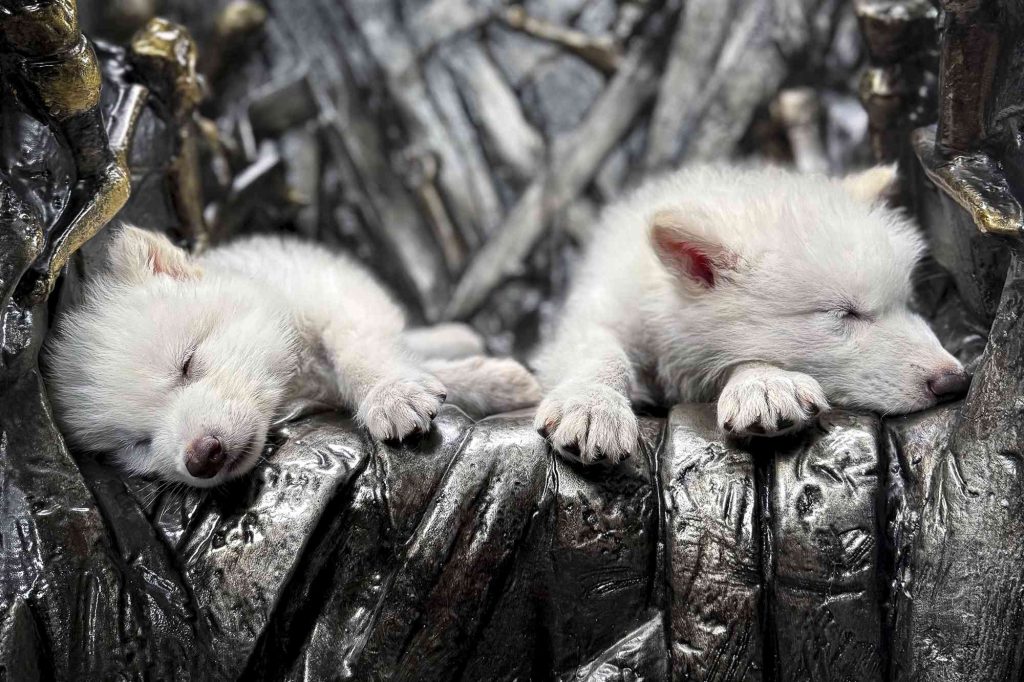The Return of the Dire Wolf: A New Era in Species Revival

Introduction
The dire wolf, a majestic and fearsome predator that once roamed the Americas, is making a comeback of sorts. Thanks to advancements in genetic engineering and biotechnology, scientists are working to bring back this iconic species. In this article, we will explore the dire wolf’s history, its extinction, and the efforts being made to revive it. The dire wolf was a formidable hunter that played a crucial role in shaping the ecosystems of the Americas. Its return could have significant implications for modern ecosystems. The dire wolf’s story is a fascinating one, and its potential return is generating excitement among scientists and the general public. With the help of cutting-edge technology, scientists are working to bring back this incredible species. The dire wolf’s revival could also provide valuable insights into the biology and ecology of extinct species.
The Dire Wolf’s History
The dire wolf was a highly specialized predator that lived during the Late Pleistocene era. It was one of the largest canines to have ever existed, with estimates suggesting that it was comparable in size to a large bear. The dire wolf’s size was likely an adaptation to its environment, allowing it to take down large prey such as bison and camels. Its powerful jaws and teeth made it well-suited to its role as a top predator. The dire wolf’s dire wolf size was likely a key factor in its success as a hunter. Despite its fearsome reputation, the dire wolf was also a highly social animal that lived in packs. These packs were likely led by dominant males and females, and were crucial to the dire wolf’s survival.
Extinction and Legacy
The dire wolf went extinct at the end of the last Ice Age, along with many other iconic species such as the woolly mammoth and the saber-toothed tiger. The reasons for its extinction are still debated among scientists, but it is likely that a combination of factors contributed to its demise. Climate change, loss of prey species, and competition with other predators may have all played a role. Despite its extinction, the dire wolf has left a lasting legacy in the form of its genetic material. Scientists have been able to sequence the dire wolf’s genome from fossil remains, providing valuable insights into its biology and ecology. The dire wolf’s legacy continues to inspire scientists and the general public alike.
Revival Efforts
Colossal Biosciences, a biotechnology company based in the United States, is working to bring back the dire wolf through genetic engineering. The company’s scientists are using CRISPR technology to edit the genome of a closely related species, the gray wolf. By introducing dire wolf genes into the gray wolf genome, scientists hope to create a hybrid animal that is similar to the original dire wolf. This is a complex and challenging process, but it has the potential to bring back a species that was once thought to be lost forever. The revival of the dire wolf could have significant implications for modern ecosystems, and could provide valuable insights into the biology and ecology of extinct species. The dire wolf’s return could also help to restore balance to ecosystems that have been disrupted by human activity.
Challenges and Opportunities
The revival of the dire wolf is a complex and challenging process. One of the biggest challenges is finding suitable surrogate mothers to carry the hybrid embryos to term. Gray wolves are a possible option, but it is unclear whether they would be able to carry the hybrid embryos to term. Another challenge is ensuring that the hybrid animals are healthy and viable. The dire wolf’s how big were dire wolves is still a topic of debate among scientists, but it is clear that they were highly specialized predators. The revival of the dire wolf could provide valuable insights into the biology and ecology of extinct species, and could also help to restore balance to modern ecosystems. Despite the challenges, the potential benefits of reviving the dire wolf make it an exciting and worthwhile endeavor.
Conclusion
The return of the dire wolf is an exciting development in the field of species revival. Through genetic engineering and biotechnology, scientists are working to bring back this iconic species. The dire wolf’s revival could have significant implications for modern ecosystems, and could provide valuable insights into the biology and ecology of extinct species. While there are challenges to be overcome, the potential benefits of reviving the dire wolf make it an exciting and worthwhile endeavor. As scientists continue to work towards bringing back the dire wolf, we are reminded of the importance of conservation and preservation of species. The dire wolf’s story is a fascinating one, and its potential return is generating excitement among scientists and the general public.








